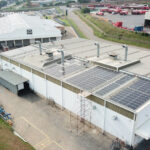IFOY 2022 winners announced
IFOY 2022 winners announced
We reveal the 2022 winners of the International Intralogistics and Forklift Truck of the Year (IFOY) Award and, just as importantly, why jury members voted for them.
The 2022 IFOY Award has been awarded to six companies, namely Jungheinrich, Locus Robotics, Noyes Technologies, robominds, SSI SCHÄFER, and SYNAOS.
The winners were announced recently at an awards ceremony at the BMW Welt in Munich. Judged by journalists from around the world (Charleen Clarke from FOCUS represents South Africa), this is considered the most important intralogistics award on the planet. Here is a list of the winning products and why the jury voted for these specific finalists.
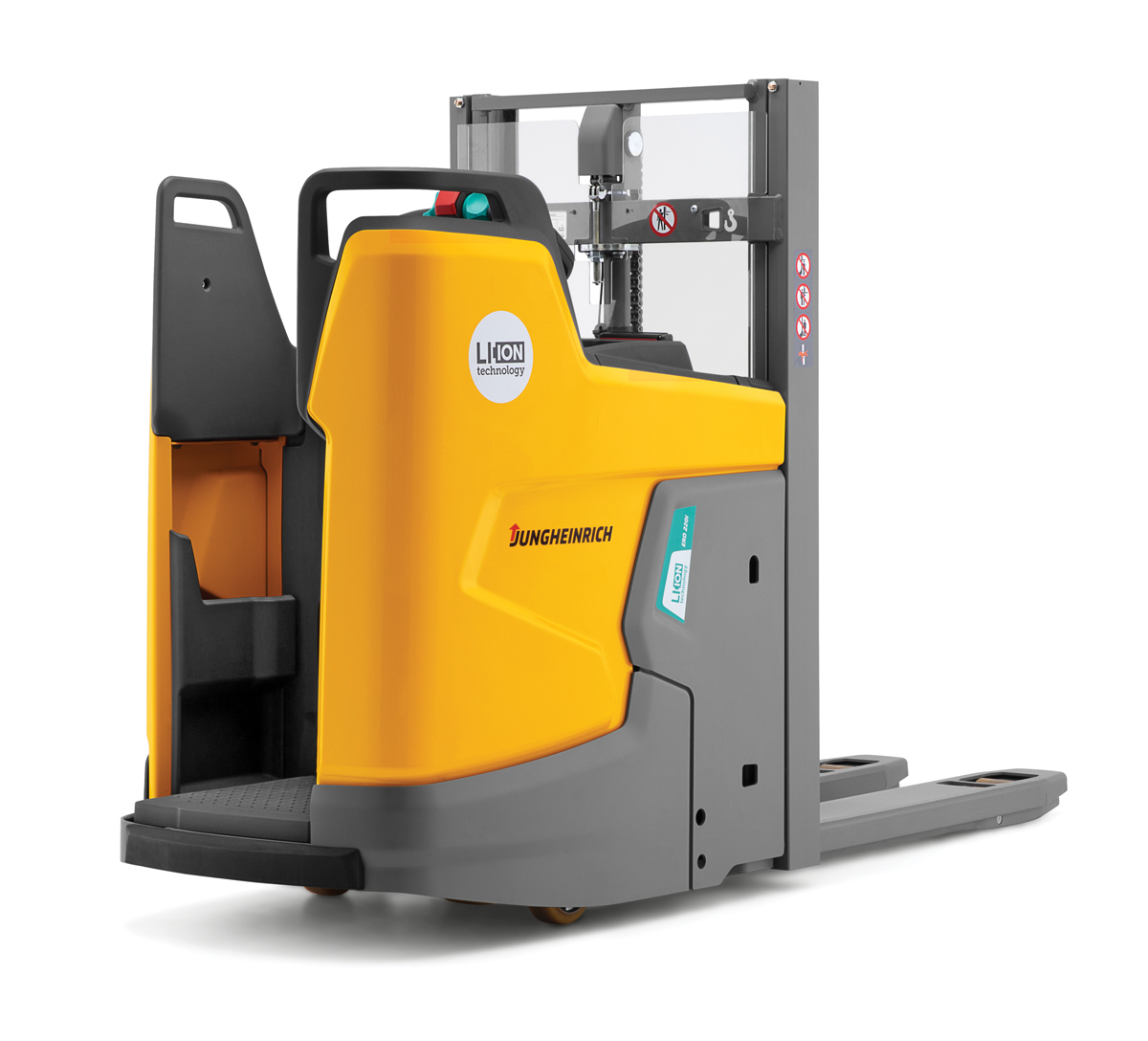
Special Vehicle of the Year 2022: Jungheinrich’s ERD 220i ride-on pallet truck
Until recently, you had to make a choice when it came to ride-on pallet trucks: users could opt for a compact size, a safe truck, or an ergonomic truck. With the new ERD 220i, Jungheinrich puts an end to this dilemma of compromise. Thanks to the integration of lithium-ion batteries, the need for a separate battery box is eliminated, resulting in a space gain of 300 mm. This is entirely due to the very compact dimensions, optimum operator protection, and improved ergonomics.
The suspension of the standing platform can be easily adjusted to the operator´s body weight via six switches. The more comfortable functioning of adjustable suspension is noticeable. The working position is also more comfortable, with the possibility to lean against the side wall on both sides. The handles provide a good grip and control in any position, while the operator feels much better protected than in a classic pallet truck with a folding platform.
Another innovation of the lift truck is the smartPILOT tiller steering. The electric steering is very intuitive and has a convenient automatic centre position for straight-line travel. The height is adjustable in four positions and the fork and lift mast are easy to operate with one hand. The new charging interface connects the truck quickly and easily to an external fast charger (up to 300 A). An integrated charger (25 A) is available as an option, offering flexibility at any 230 V socket.
Why it won:
Working with pallet trucks is no longer a compromise between safety, compactness, and ergonomics. With the new ERD 220i, Jungheinrich sets new standards for a safe, optimally protected, and yet super-compact electric pallet truck. The performance is first class and challenges the competition.
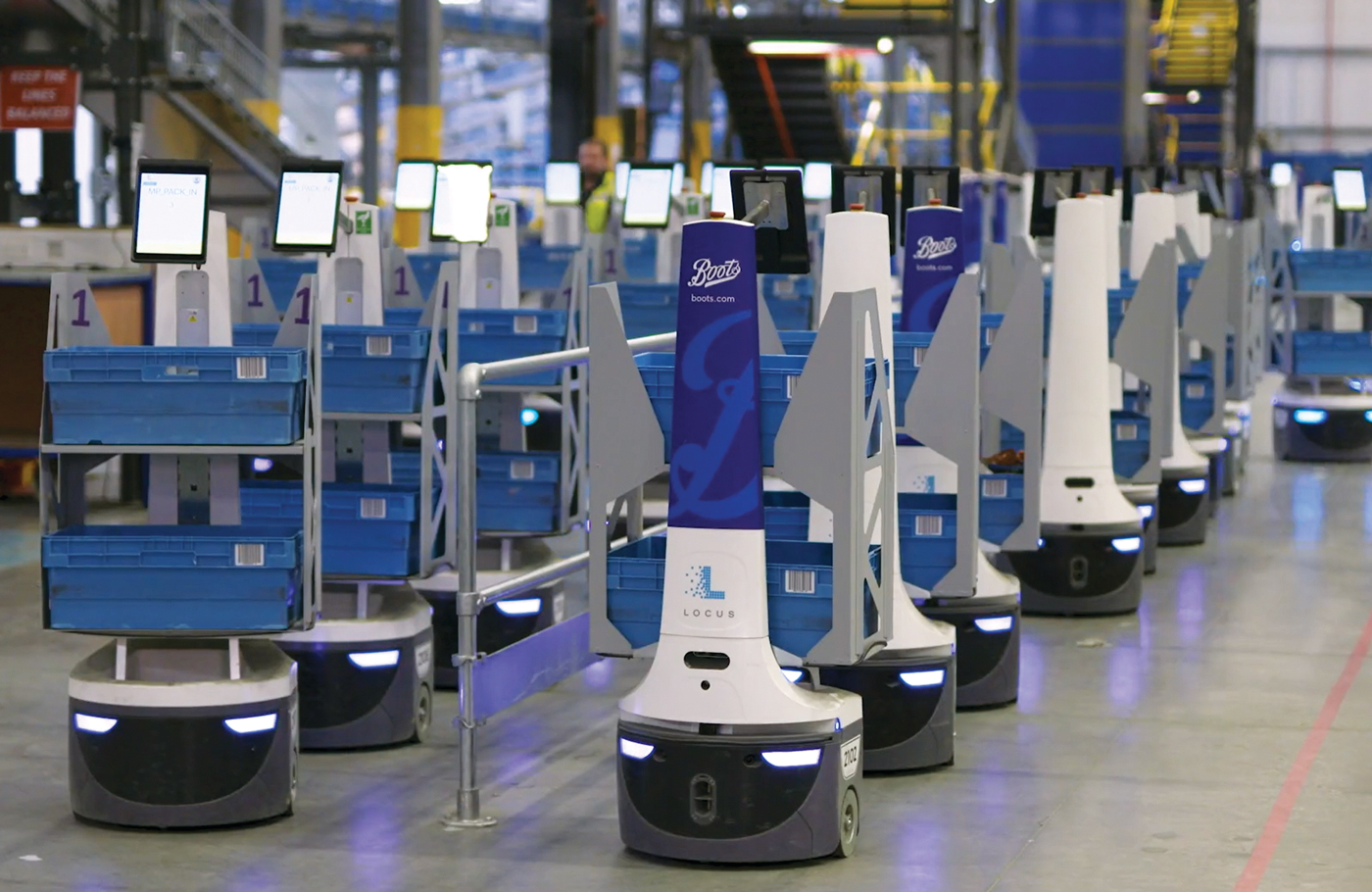
Automated Guided Vehicle (AGV/AMR) of the Year 2022: Locus Robotics’ AMR Solution
US provider Locus Robotics offers its autonomous robots, which work collaboratively with warehouse staff, exclusively in a packaged rental model. After the set-up with a one-time start-up fee, a “core fleet” is available to the customer for their tasks. This is an average of between 45 and 50 vehicles per customer.
Locus currently serves around 80 customers in about 200 warehouses with its picking system. The customers come not only from retail, but also from pharmaceuticals and industry. Picking into the 45-kg moving robot is extremely easy: the type and quantity of the products to be picked at the location and placed into the small load carrier on the Locus robot are prominently displayed on the clear touchscreen. Testers found this easy and intuitive; no “learning the ropes” was required.
The peak season for Locus is November/December, because the Christmas business rush burdens retailers with easily four to five times as much picking work as during the rest of the year. Locus solves the problem of the lack of skilled workers pragmatically and effectively, by separating the employees from the picking trolleys. The work comes to the pickers (a classic goods-to-person principle), although there is no simply standing at a fixed workstation. Instead, the “flow” passes through a certain area, which normally does not go beyond the warehouse aisle. This not only saves a lot of energy, it also makes the work far more efficient. The Locus software clusters the orders for the optimal picking route (for the roving units, not the individual pickers) factoring in which orders are connected on a container. In the field, the system works with high-quality Lidar. The picking system also increases productivity; each person at a single picking position, for example, spends only eight seconds instead of 12 for each action, which quickly adds up. When picking, both hands are free for the products to be picked.
Why it won:
Collaborative AMR can help retailers, 3PLs, operators of special warehouses, and manufacturers to greatly improve their effectiveness with an ROI of six to eight months. In so doing, an integrated execution platform uses proprietary optimisation algorithms and operational performance data to coordinate “man and machine”. Locus has 33 patents in the US and seven in Europe, while an additional 23 patents have been filed in Europe.
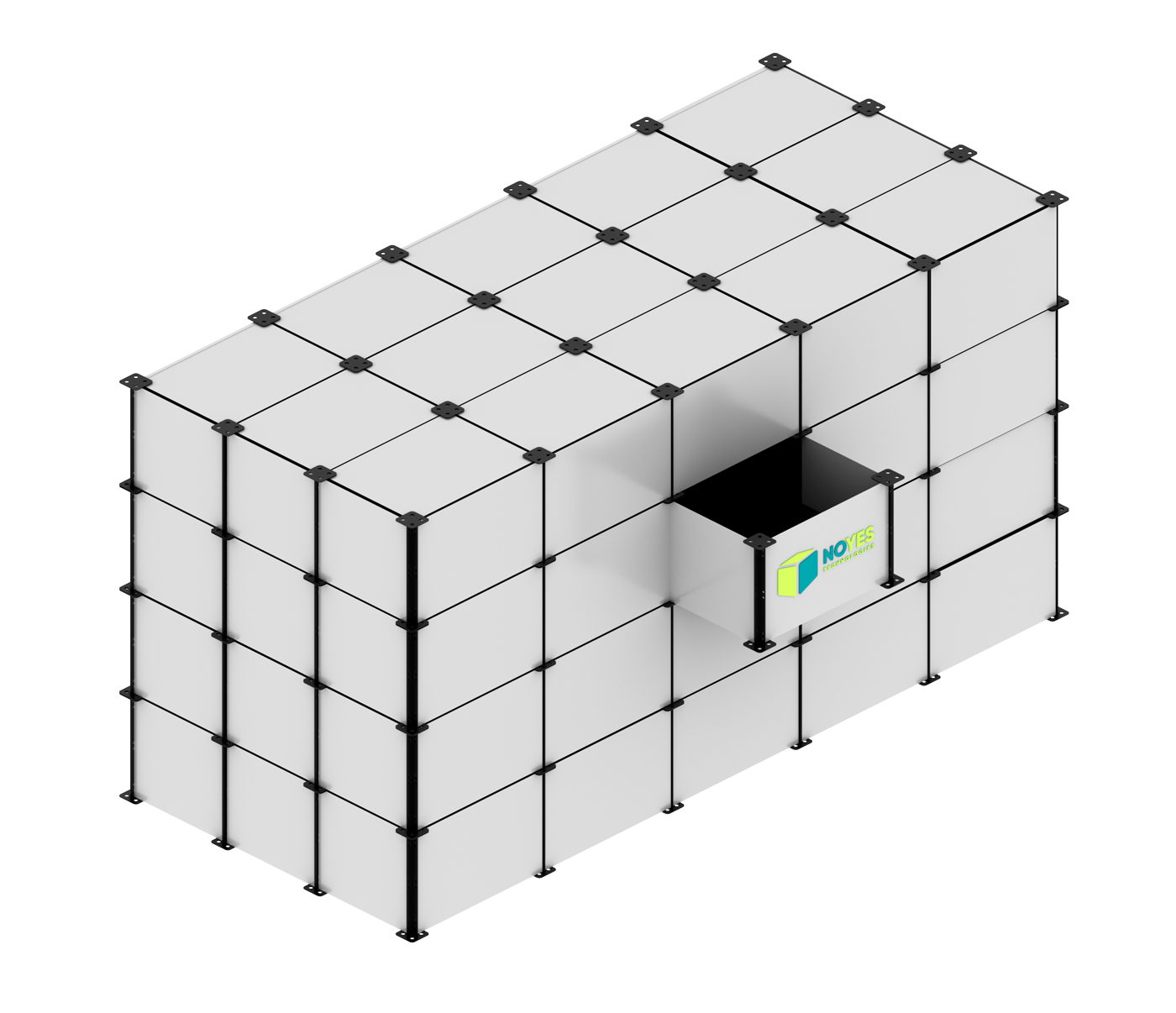
Start-up of the Year 2022: Noyes Storage by Noyes Technologies
Customer behaviour in the food sector is more dynamic and volatile today than ever before. Providers of logistics systems in urban areas are faced with the challenge of expensive city centre rentals, high labour costs, and the desire of end customers to receive their orders ever faster. This calls for fast systems that must emit extraordinarily low levels of noise. Noyes offers the first robotically operated, ultra-dense, automated, and highly flexible nano-logistics system especially for urban logistics.
Noyes can automate even the smallest areas with its storage technology and consequently enables fast delivery times at an affordable price. Up to 2 000 stock keeping units (SKUs) can be compressed in a 30 m2 warehouse, for example. In city centres, where a floor load of no more than 250 kg/m2 is permitted, the noise level above such a nano-storage unit may not exceed a maximum of 35 dB with the window open. This is particularly important when a building is used for mixed purposes (as a logistics location and a residential building). The Noyes Storage plug-and-play system works with modules of 500 x 700 mm. A set-up time of only 10 minutes is calculated for each module, and this can be done at the customer´s premises during operation. Up to eight boxes fit on one carrier. The first 70 storages of 1 000 to 1 500 modules will be sold by the end of 2022, while modules with cooling will also be integrated by the end of 2022.
The Noyes warehouse can be optimised for any floor plan due to its modularity. The shelving system (Shelf) was conceived with a team of developers from Lebanon. The aluminium transport robot with self-developed control system weighs 20 kg and can transport containers weighing up to 60 kg. Later, this will give way to a plastic injection moulding weighing a maximum of 10 kg. A connection of just 230 V is needed to operate the nano-storage unit. To be “fully” available during peak times, the robot docks with its charging pins at the charging station during times of low demand.
Why it won:
The ultra-dense urban nano warehouse from Noyes is particularly tailored to companies’ need of proximity to customers. In the nano-fulfilment hub, end customers in urban areas can pick up their product themselves around the clock. Alternatively, sustainable emission-free last-mile delivery providers bring the products to the end customers by bicycle or e-bike. With an ROI of 12 to 16 months (with or without a cooling solution respectively) Noyes Storage pays off relatively quickly, even on a small budget.
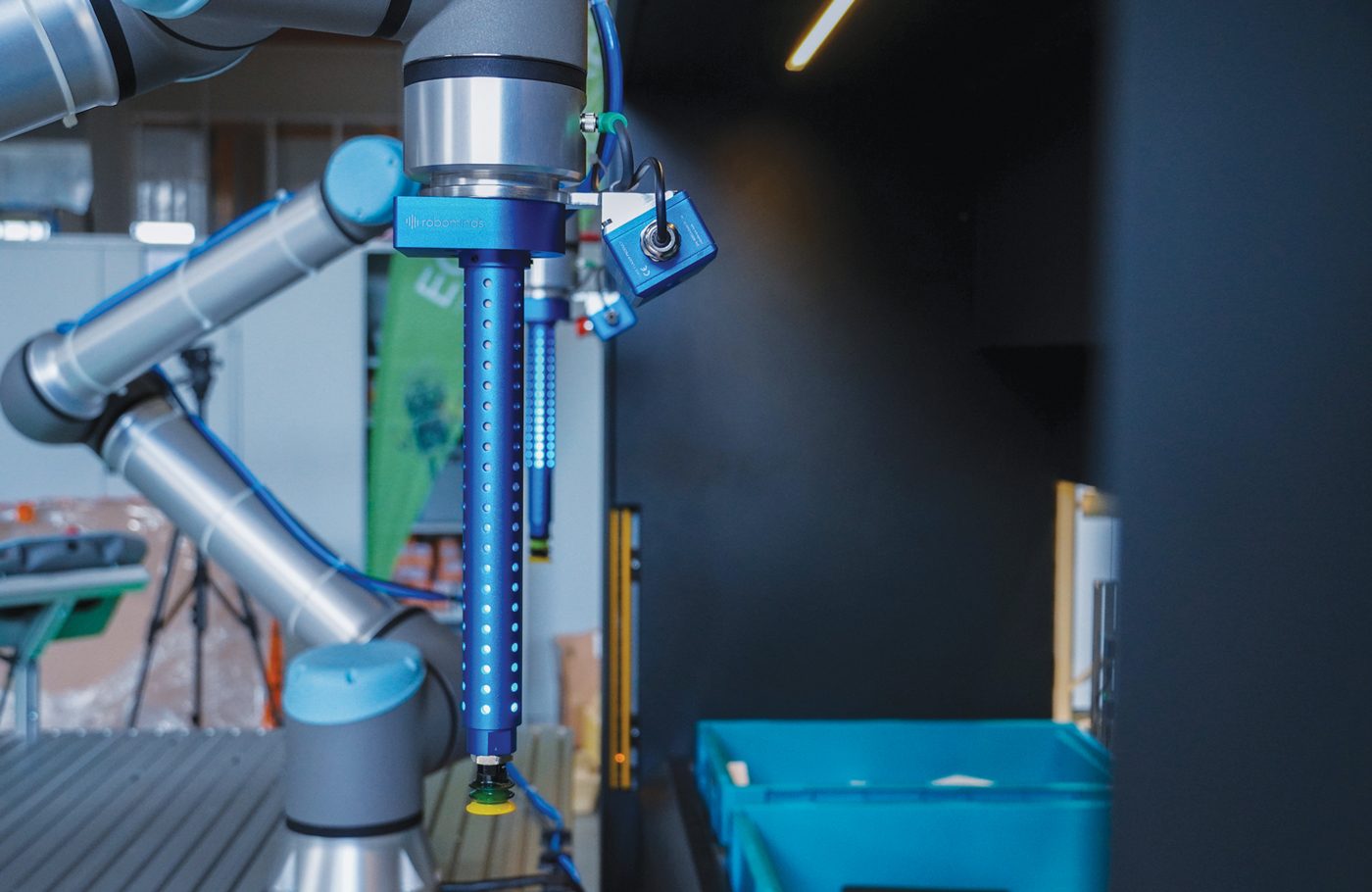
Robot of the Year 2022: robobrain.NEUROS from robominds
NEUROS (Neural Robotic Operating System) is optimised for the industrial PC robobrain and as a platform for all robots, grippers, and other kinematics. The system creates an automation environment that is user-centric and easy to operate, for scenarios of any industry and company size. On the industrialised operating system, every function of the robotic components becomes a skill.
Modular principles apply to both the software and the hardware, while several applications can be shown in the test setup, such as palletising and box recognition.
The focus is not on the gripper itself, but always on the application, centring on problem solving rather than system integration. The skills, in turn, are easy to obtain via the robominds Skill Store. These skills can be adapted individually or developed by the user with the robominds Skill Software Development Kit (SDK). There are vision skills (such as item picking or bin picking), control skills for the simple programming of robots or the fleet management of several robot cells, and driver skills for various robots, grippers, and cameras.
With shorter product life cycles and production quantities up to batch size 1, flexible processes place increasing demands on production and material flow for all companies, bringing processes to the fore. The process itself is actually the core of modern production and this is where the robobrain.NEUROS system comes into play: valuable process knowledge becomes more easily accessible through the robot operating system. At the same time, data security, data integrity, and trusted AI are maintained through adherence to European standards – essential in the digital world and especially in the production environment. The transformation towards adaptive processes affects almost all processes in the production of a material or goods flow. In robotics especially, flexible applications are becoming increasingly diversified and finding their way into different environments and applications. Fast growth is driving the market potential for robobrain.NEUROS, which is already being used by corporations in various industries, including automotive, pharmaceuticals and diagnostics, and intralogistics.
Why it won:
The robobrain.NEUROS neural robot operating system can serve as a platform for the next generation of automation in logistics. It can be used to create an automation environment that is easy to use, economical, and conserves resources.
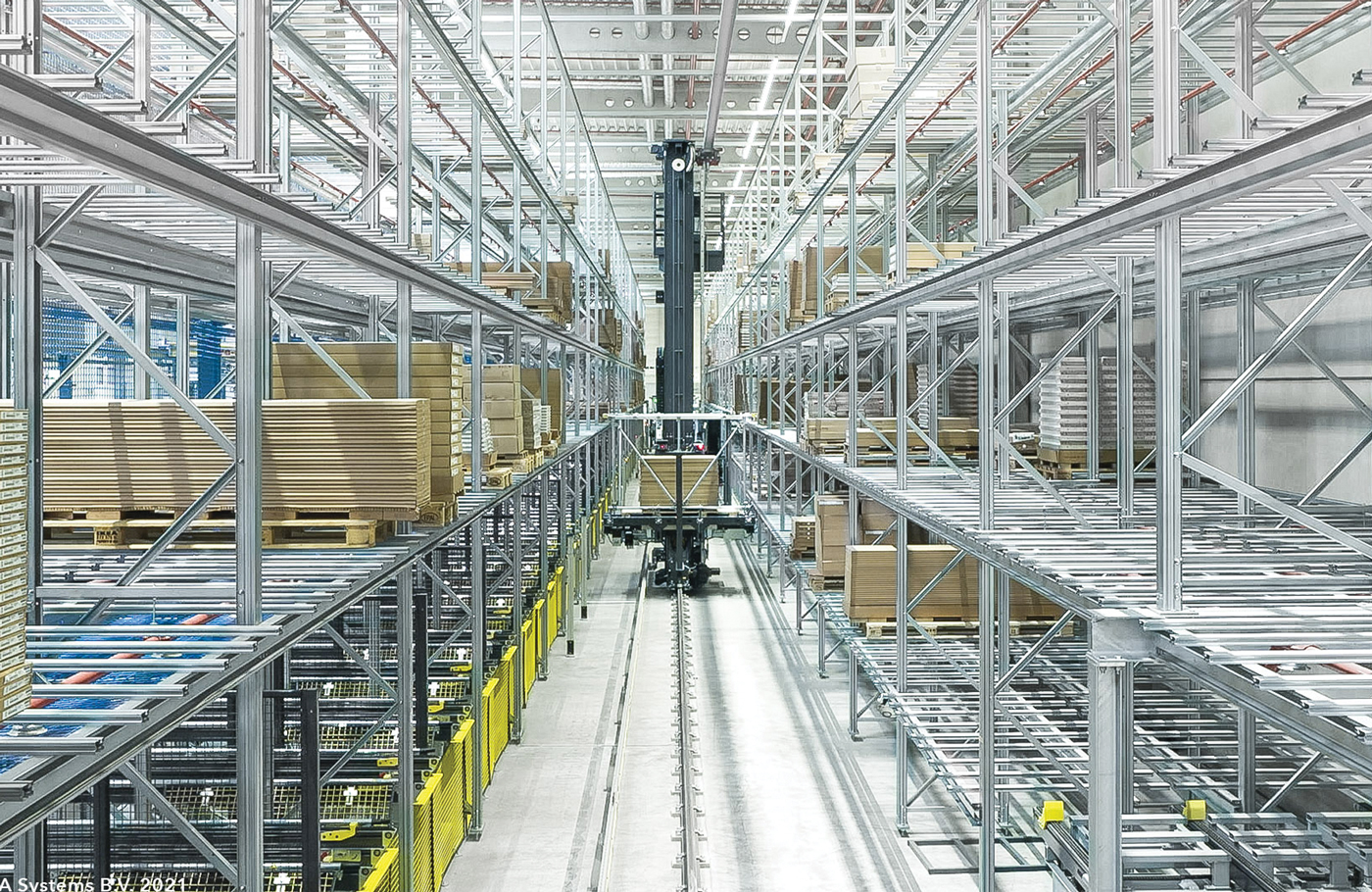
Integrated Warehouse Solution of the Year 2022: SSI SCHÄFER for IKEA Project Flat Pack Picking
IKEA operates Germany’s largest customer order distribution centre in Dortmund. Together with its long-standing partner SSI SCHÄFER, Ikea has successfully relieved its employees of heavy physical work. Heavy and large items are palletised in a volume-optimised manner with the help of the new picking module from SSI SCHÄFER, while optimal packing patterns for the order pallets are automatically generated.
The introduction of this sustainable, innovative picking concept from SSI SCHÄFER was preceded by a concept study starting in 2017. Following a promising test installation and subsequent simulation, the concept went live in April 2021. The heterogeneous range of articles and the large proportion of heavy and bulky articles were particular challenges to overcome. It turned out that of the approximately 12 000 stock keeping units (SKUs) in the distribution centre, about 10% could be handled fully automatically – usually the so-called “fast-moving items”.
The goal of the four gantry robots used was to relieve the employees of heavy tasks by means of automated gantry picking. One of the four gantry robots, with its 16 suction cups that grip the packaged goods from above and the cameras at the four corners, has a theoretical (technical) picking performance of 70 to 80 picks per hour. This makes these four robots the fastest link in the entire system. Together, the four gantry robots can handle a maximum of 312 picks; in real operation, they currently handle 200 picks per hour. Intermediate layers on the individual packages that get in the way of the fast lifting and transporting process of the packages are reliably detected and removed. The four main gantry robots are supported by two smaller gantry robots located outside the actual picking area.
The turnkey, scalable order-picking solution basically consists of three areas: the left-hand part of the system for the dynamic provision of the slower-moving furniture packages, the actual picking area in the middle where the four “ro-ber” gantry robots do their work and to which no human has access (unfortunately not even for testing purposes), and the right-hand part of the system for the static provision of the fast-moving items. The gantry robots are equipped with multifunctional grippers that automatically adapt to the dimensions of the articles to be picked and the type of packaging by means of servomotor-adjustable suction cups.
Packages up to 2.5 m long and weighing over 60 kg are safely picked up from the source pallet and transferred to the order pallet. SSI SCHÄFER’s Pack Pattern Generator ensures that the requested items are optimally arranged on the order pallet and can be picked up for the customer’s order.
Why it won:
According to IKEA, the new system enables the company to handle an additional 3 000 customer orders per week. SSI SCHÄFER’s sophisticated flat pack picking solution can also be adapted to a wide range of different SKUs outside the furniture industry.
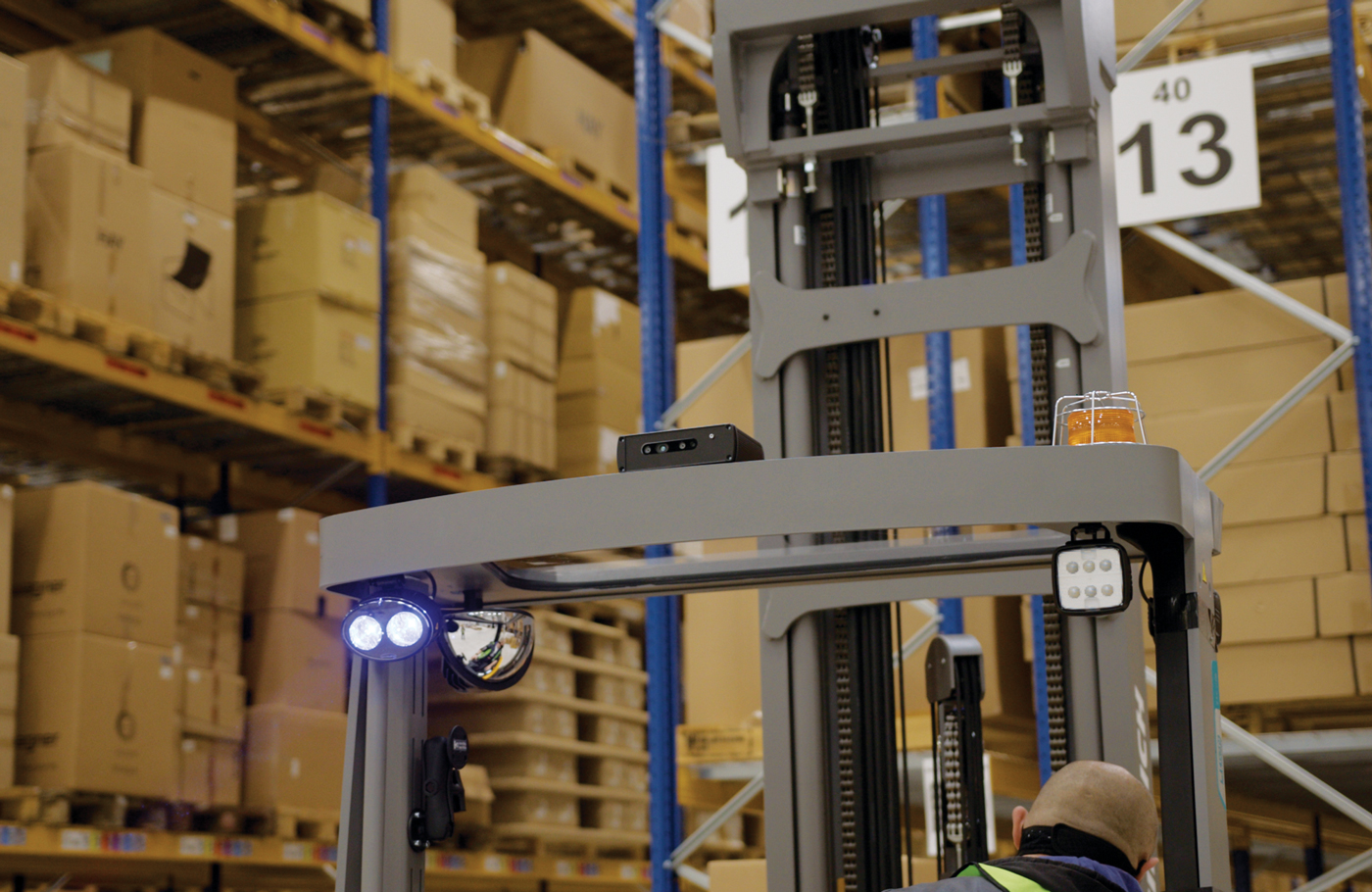
Special of the Year 2022: SYNAOS’ localisation system SYNAOS IMS – Vehicle Localization
Most forklift trucks are still controlled manually and if they are digitalised this is only rudimentary. With the SYNAOS IMS – Vehicle Localization system, a camera-based sensor kit ensures their cost-efficient localisation – using state-of-the-art computer vision technology. SYNAOS is a software company that is building hardware: a small black box (19 x 12 x 6 cm) that screws onto a forklift and projects images onto a screen.
The manufacturer has dedicated itself to eliminating the gaps in the indoor localisation of manually controlled industrial trucks of all kinds. Some 95% of companies have forklifts in use, but these are rarely well integrated into the value chain. Currently, only the transport order is digital; the forklifts themselves are not digitalised. As a result, no one knows where a forklift is at any given time. There are forklift localisation technologies, but often they are not used. There is a reason for this: ultra-wideband or lidar technologies are simply too expensive.
With the new system from SYNAOS, things are very different. The system – a Localisation-as-a-Service (LaaS) tool – works with so-called “markers”. Everything is already included in the price and the detection is accurate to within 25 cm, but the real intelligence is in the plug and play software. Users can create transparency in a flash with SYNAOS IMS – Vehicle Localization. Which part of the warehouse is busy? What are the braking distances? Where are people driving around without a driving order? Now it’s even possible to pinpoint a truck that is always running late. In short, you can observe the exact fleet utilisation. A major unique selling proposition compared to the conventional storage method is that the forklift only reports the position to which it has driven a pallet; scanning the pallet or products is no longer necessary.
Why it won:
The simple real-time localisation of all types of industrial trucks with the help of this very convincing localisation system helps customers on their way to the complete digitalisation of intralogistics. It is extremely easy to record fleet utilisation, as well as create heat maps for critical points in the warehouse and optimise warehouse layouts. The basic tenor: inexpensive hardware works together with intelligent software. Every industrial truck with a power supply and a mounting option can be equipped with the SYNAOS IMS – Vehicle Localization sensor kit, representing a huge market.

Looking Ahead
The 2023 IFOY Award programme has already begun, and suppliers of new products can once again apply for this accolade. A total of 12 categories covering all areas of intralogistics are up for election in the 11th edition of the award in 2023.
Published by
Focus on Transport
focusmagsa

